PG DS2 Dream Studio
The Dream Machines The explosion of generative AI tools this year has disrupted design industries around the world. Trained on datasets of billions of image/text pairs sampled from across the internet, these tools expose a provocative way to explore the sum of human knowledge and creativity. Marketed as dream machines, they are capable of unleashing novel aesthetic possibilities at a rate previously unimaginable. The World Wide Web has been growing exponentially since its inception, and now holds an incredible bank of images that touch on many aspects of life and culture— past, present and future—while totally ignoring others. This database has become such an ingrained part of our work and everyday life that it is almost mundane to acknowledge, but this dichotomy is where the storytelling politics of the internet start. As vast as it is, its underlying space—the hidden connections between ideas, concepts and narratives that we unwittingly make every time we write about an image—looms infinitely larger. This is the latent space of the internet. Content that doesn’t exist unless it is searched for; it is a black box, impossible to map except by exploration. It represents a ‘collective unconsciousness’ that we are only now able to explore with the help of these AI image-making tools. What new forms and aesthetics are hidden in the space between images and words? The Dream Studio This design studio asks you to act as an explorer in this latent space of ideas; developing skills in prompt craft to create a unique vocabulary as a window into your own aesthetic obsession. You will dream with generative AI to develop the starting point for the narrative, site and brief of your dream project. You will explore new methodologies for visualising ideas from drawings and models from AI throughout the year. This studio emphasises digital and physical making/ drawing as a critical counterpoint to the power of digital generative design. We develop design research through a combination of modelling, scripting and making to test geometry and develop a body of knowledge which can realise the formal language of your aesthetic explorations.
-
Adam Holloway, Elliot Krause, Esther Madronal
-
Toby Shew, Elfed Samuel, Deniz Krause, Ran Xiao, WEA, Grimshaw
-
Isyraf Said, Aniket Adke, Dan Atkinson, Razaq Ademosu, Meetesh Parmar, Prachi Panchasara, Shehara Kannangara, Qifeng Rong, Wan Jin Chai, Rava Hassan, Hanna Chitgar, Anna Llie
A Familiar Fantasy
Dan Atkinson
A Familiar Fantasy explores intergenerational care within the existing site of Fort Gilkicker in Gosport, England. This innovative approach brings together elderly individuals and children, fostering activities and socialisation despite perceived differences. Research shows the mutual benefits: elders gain cognitive, physical, and social stimulation, enriching their lives as they mentor younger generations. Simultaneously, children gain valuable skills and knowledge from diverse adult role models beyond parental teachings.
In the UK, integrated intergenerational care centres are scarce, especially purpose-built facilities. This project seeks to push the boundaries of this methodology by proposing bringing together people with early-stage Alzheimer’s and children looked after by the state.
The proposal merges three familiar formal typologies - the terrace street for accommodation, the train station for circulation, and the church as a public meeting place - inspired by local examples in Gosport to instil comfort and familiarity among the elderly. A fantastical playscape intertwines with the familiar featuring mounds and water pools across the site, complemented by a large canopy roof creating a central gathering space with a unique stepped voronoi play structure. This blend of an existing site with familiar forms and playful elements creates a centre that brings together two groups with different needs into a single community which benefits both.
Themes: Sustainability, Innovation, Experimentation, Postgraduate, Social Value
“My project creates social value by bringing together the elderly and children in the environment of an existing historical building. Creating social value while utilising sustainable architectural regeneration was the key to my project.”
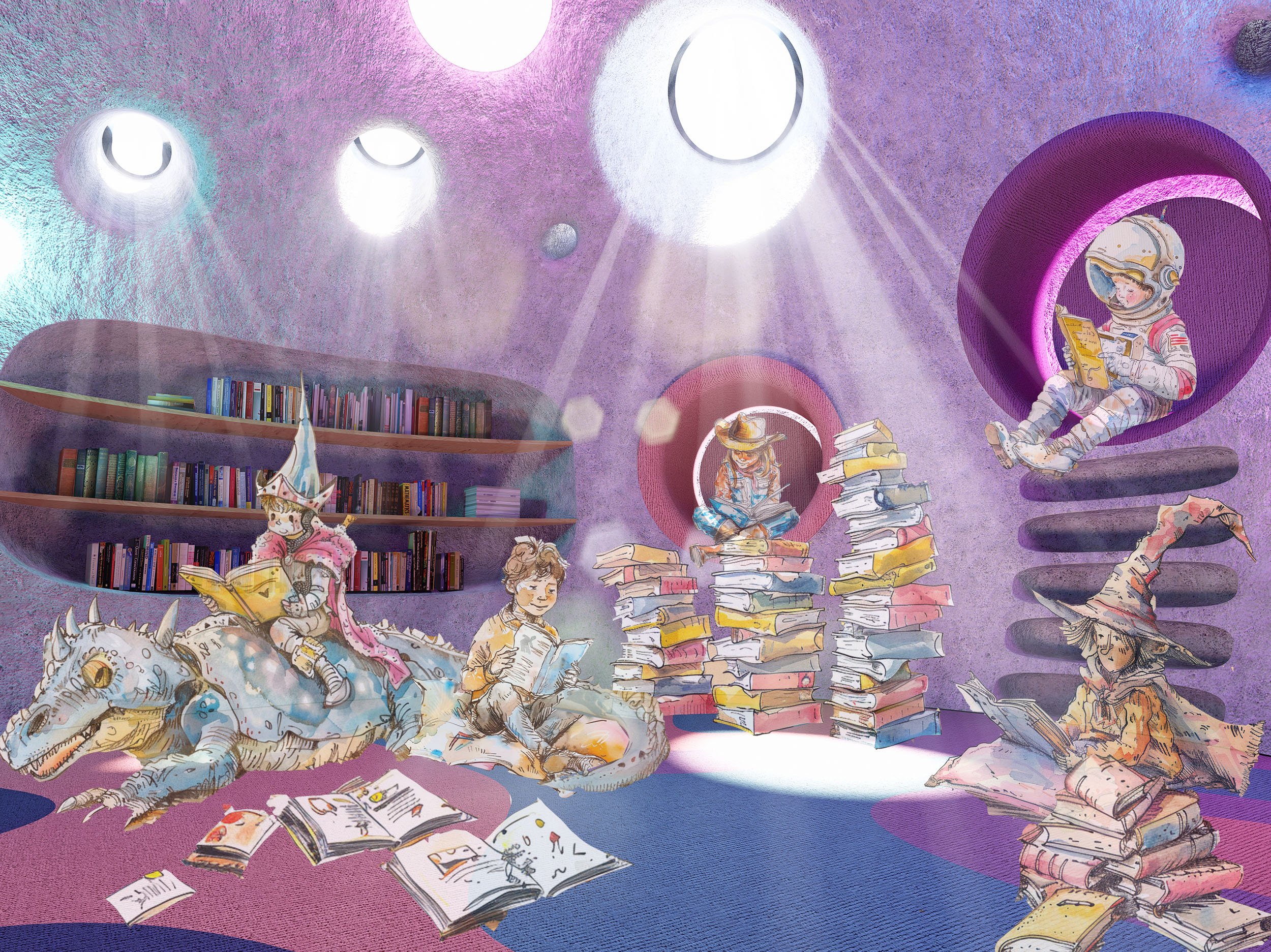
Reading Nook
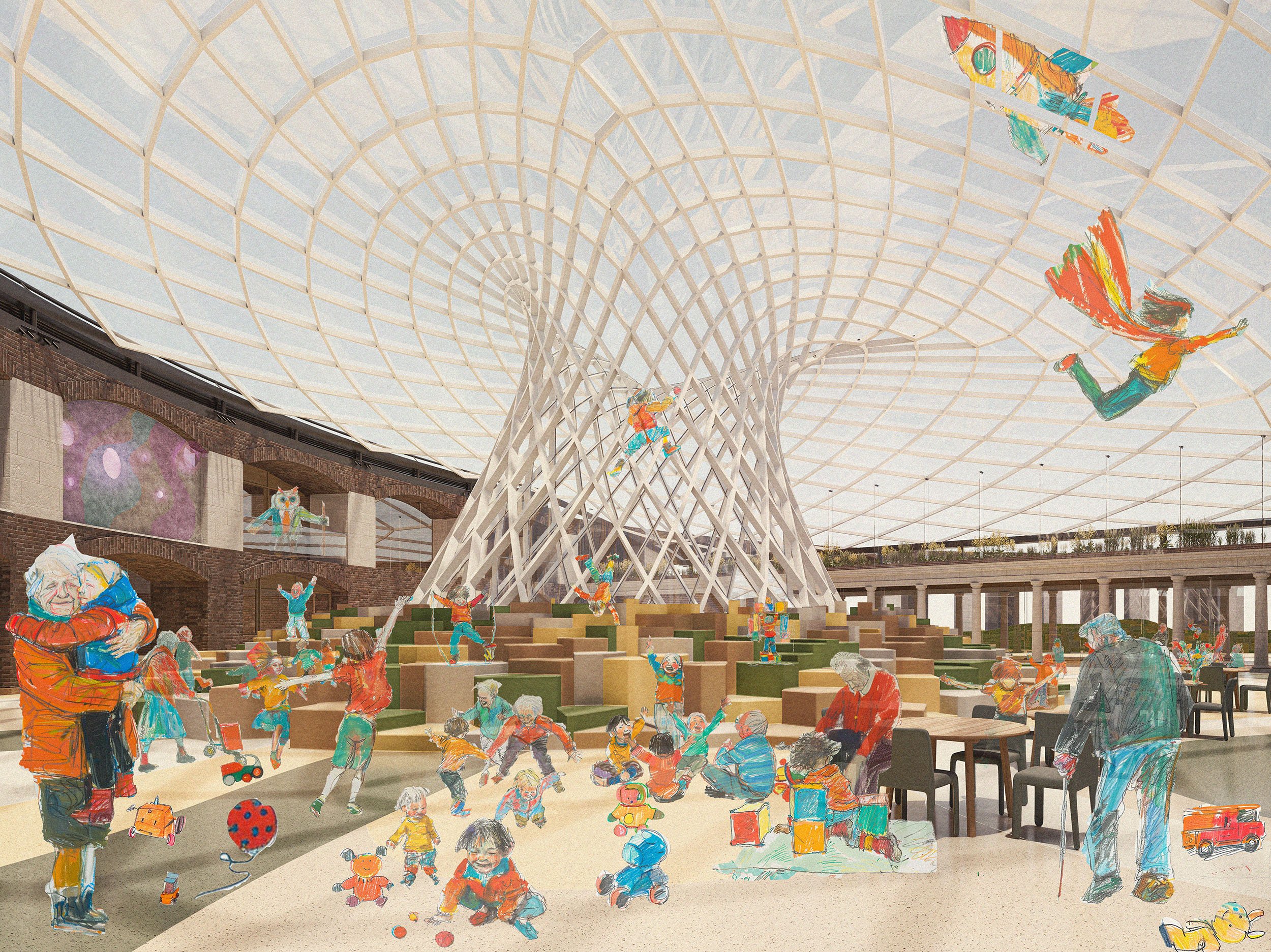
Canopy Roof
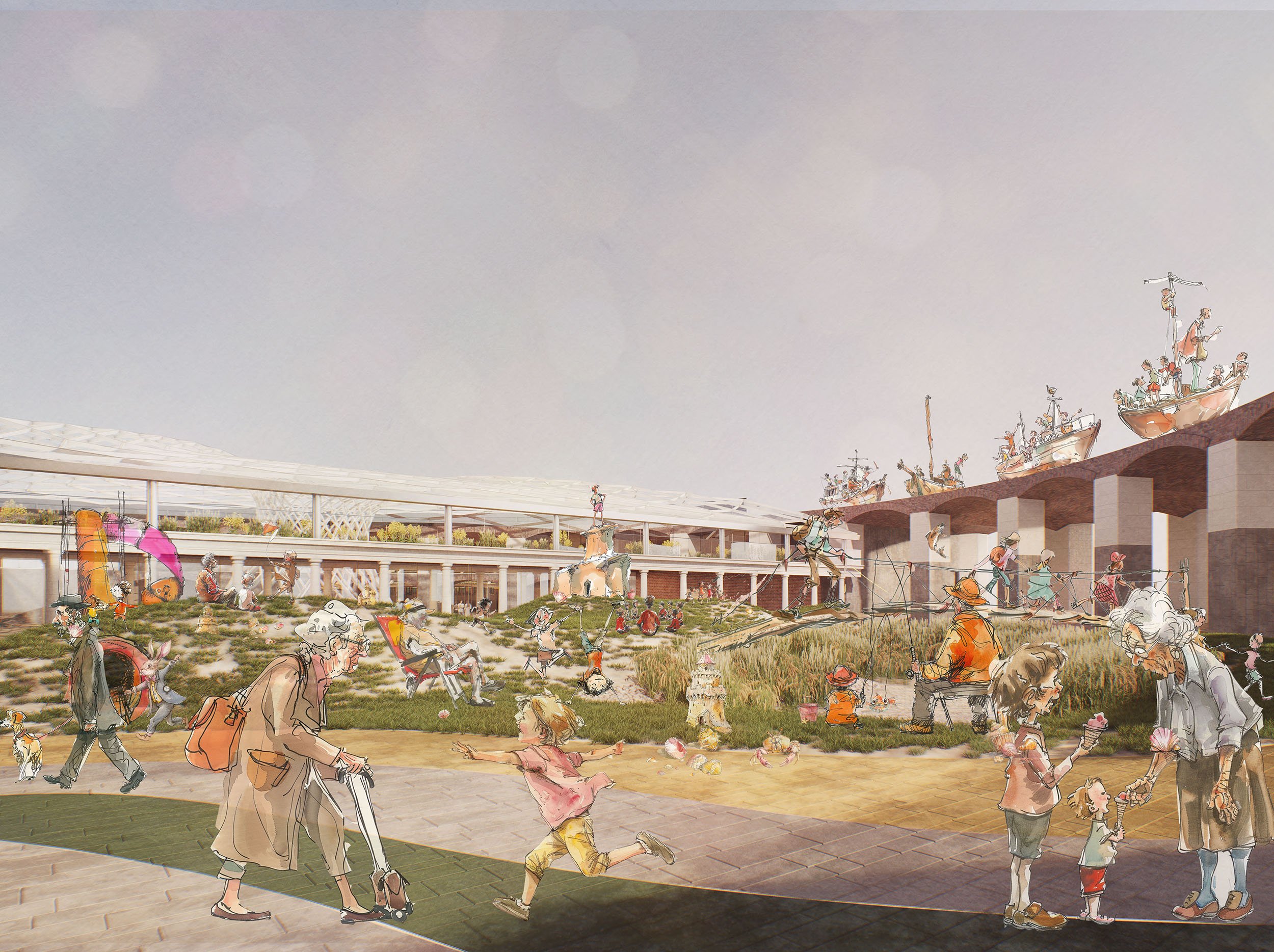
Outdoor Courtyard
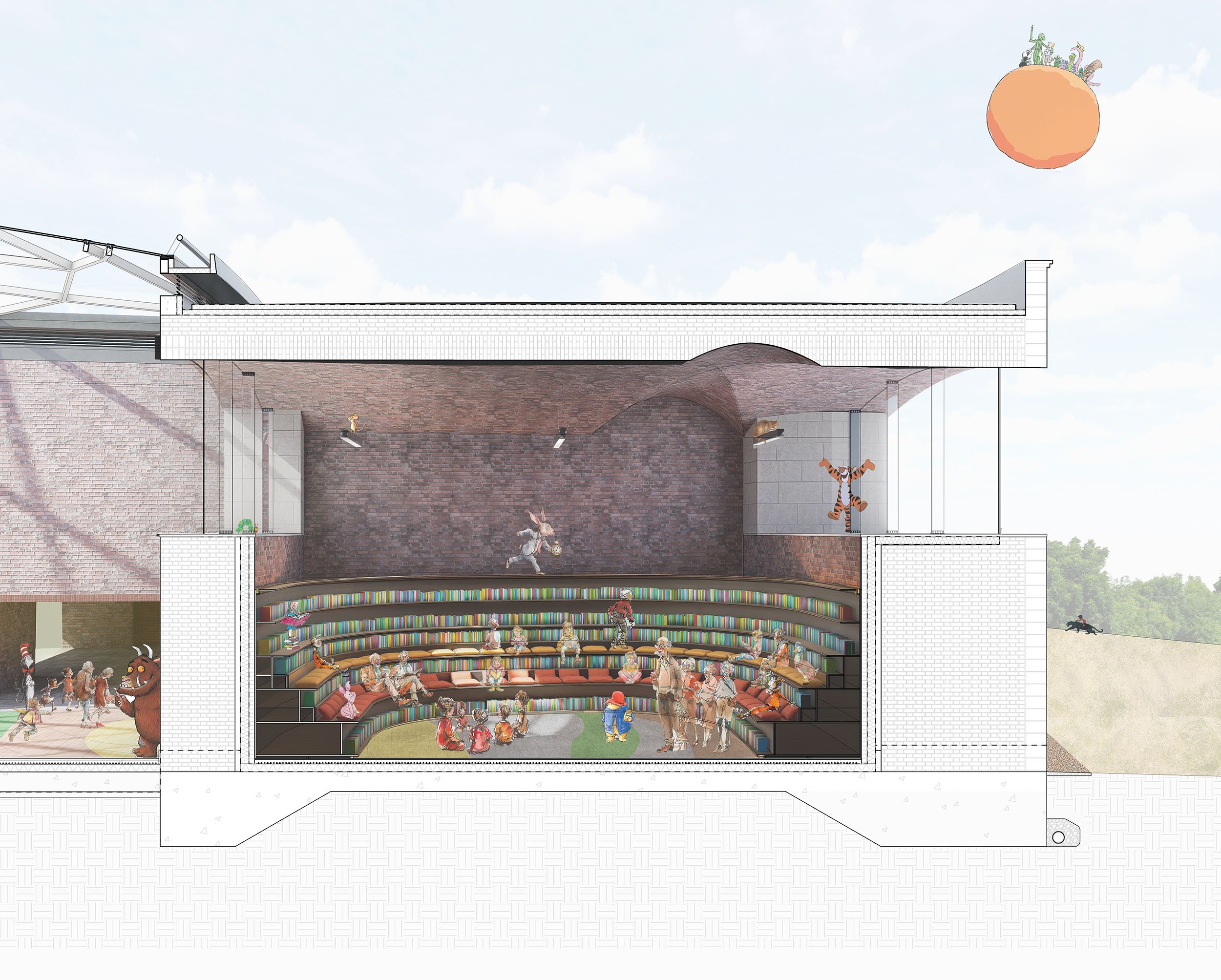
Sectional Perspective
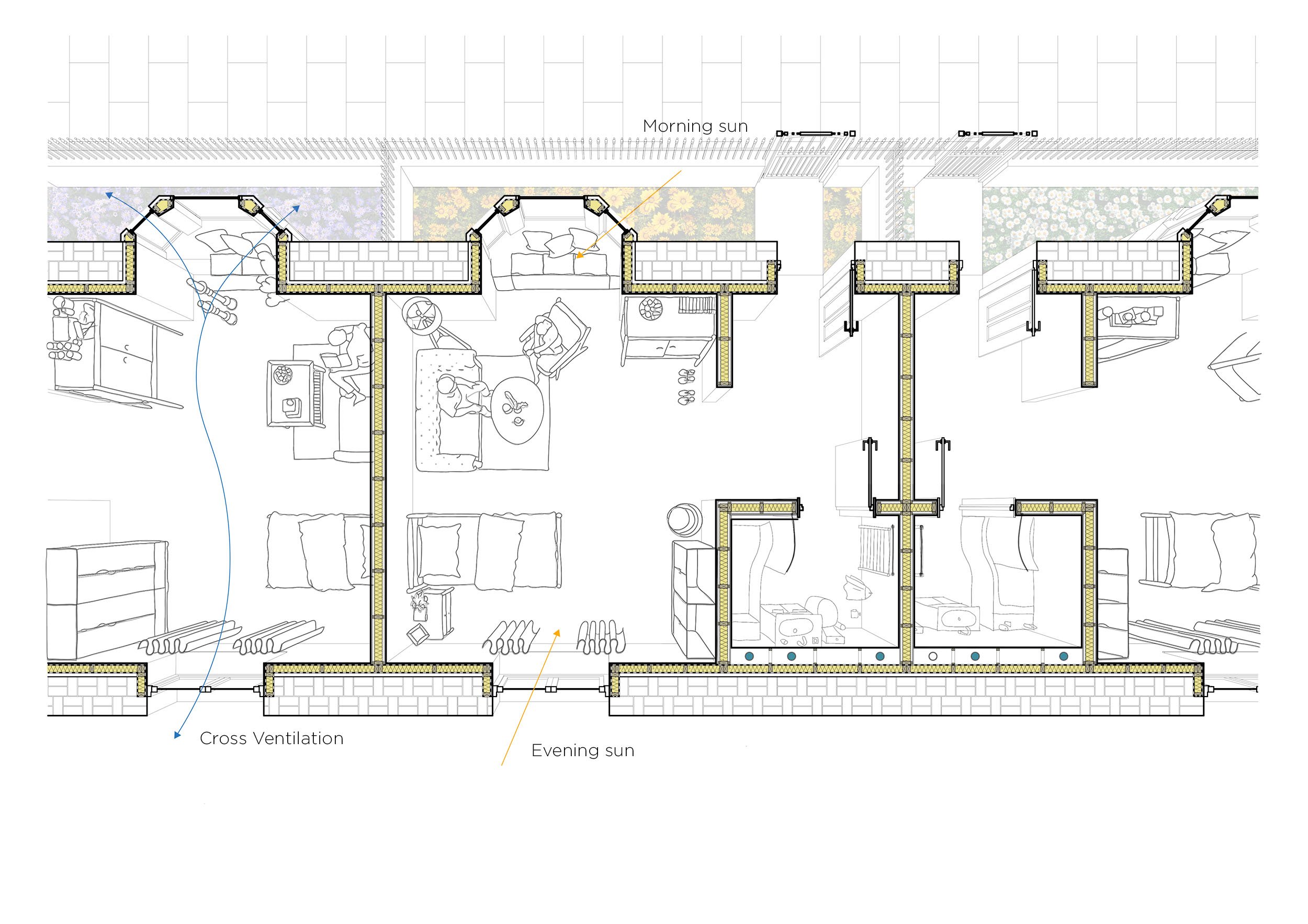
Plan Perspective
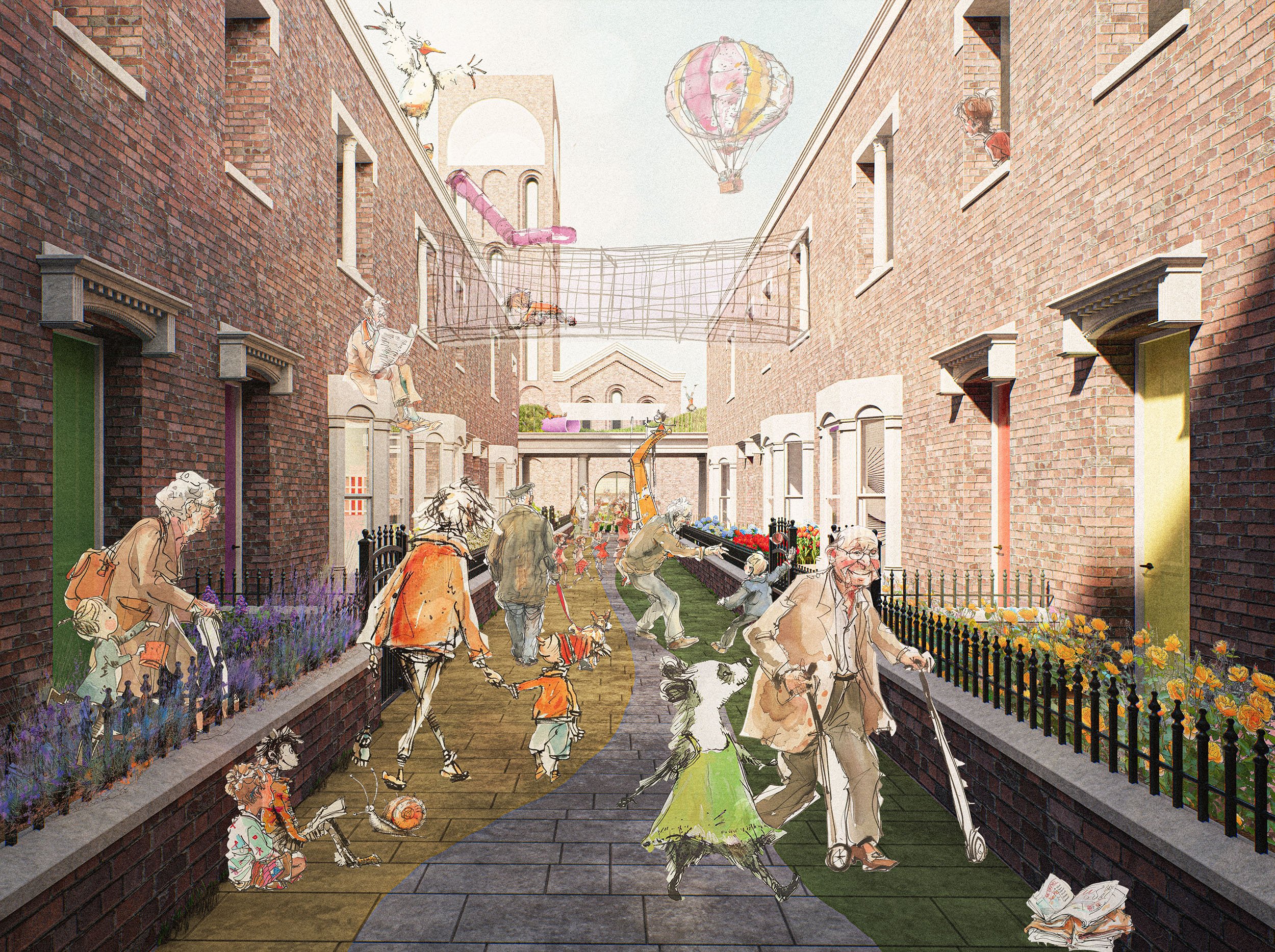
Terrace Street
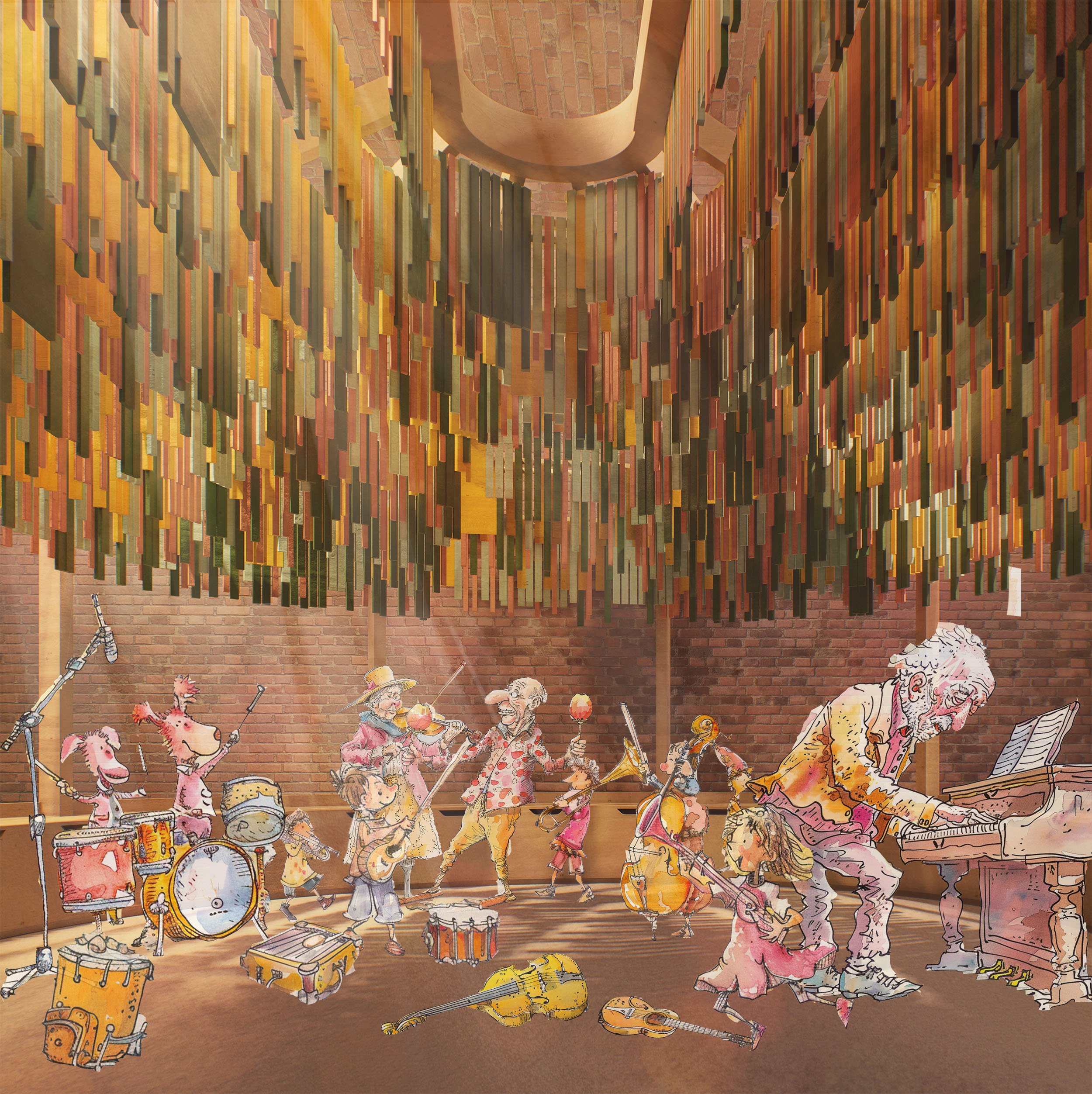
Music Room
Liberation Locus, The extension of London City Hall
Hana Chitgar
This project aims to expand London City Hall while promoting unity between the public and the government. City halls are where decisions affecting people's lives are made by the mayor and their team every day. The idea is to create a space where public debates, similar to the Speakers' Corner in Hyde Park, can happen alongside government chambers. This means that the opinions of ordinary people can directly influence government decisions. Additionally, there will be an exhibition area for displaying socially and politically themed art. Overall, the goal is to provide a place where people can express their concerns in a respectful manner, right at the heart of the government's operations.
The manifesto is tectonism and it has five principals: The symphony of structure, beauty in purpose, the spirit of sculpture and the legacy of efficiency Throughout the design process, it is strived to uphold these principles at every stage. Starting from conceptual stages, the aim is to create architecturally sculpted structures that evoke emotional responses out of black crystal, transitioning from raw materials to efficient and purposeful structural elements.
AI methodology played a crucial role in shaping the initial stages of the design process. It involved a continuous loop between AI-generated images, physical models, and digital models. Drawing inspiration from these AI-generated images acted as a catalyst throughout the design journey. They sparked ideas about how the interplay of sharp edges could create unique forms or how lighting could enhance interior spaces. Additionally, the scale, particularly inspired by Midjourney, served as another significant wellspring of inspiration, influencing the overall direction of the design.
Themes: Social justice, Innovation, Experimentation, Postgraduate
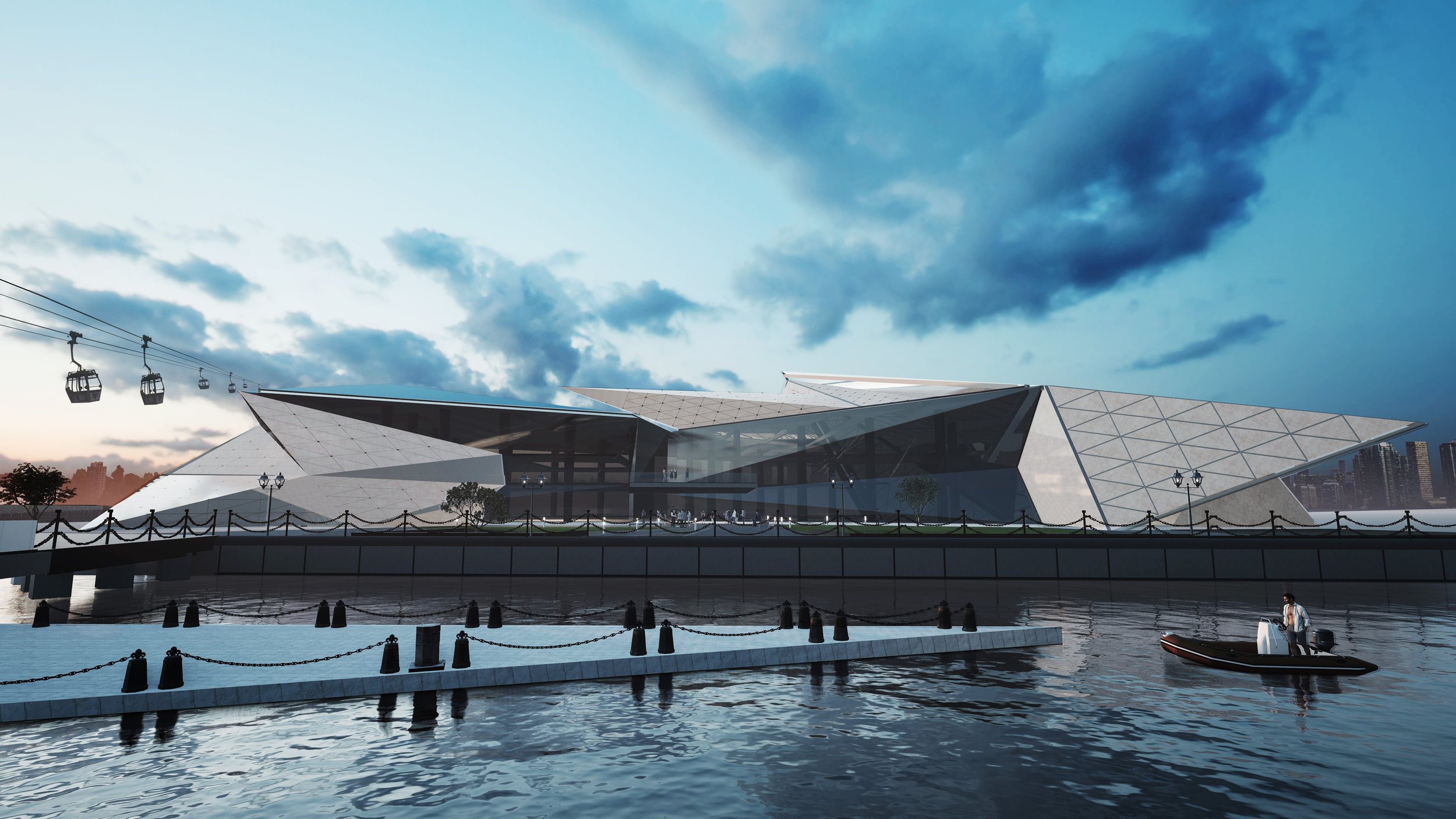
Exterior View 1
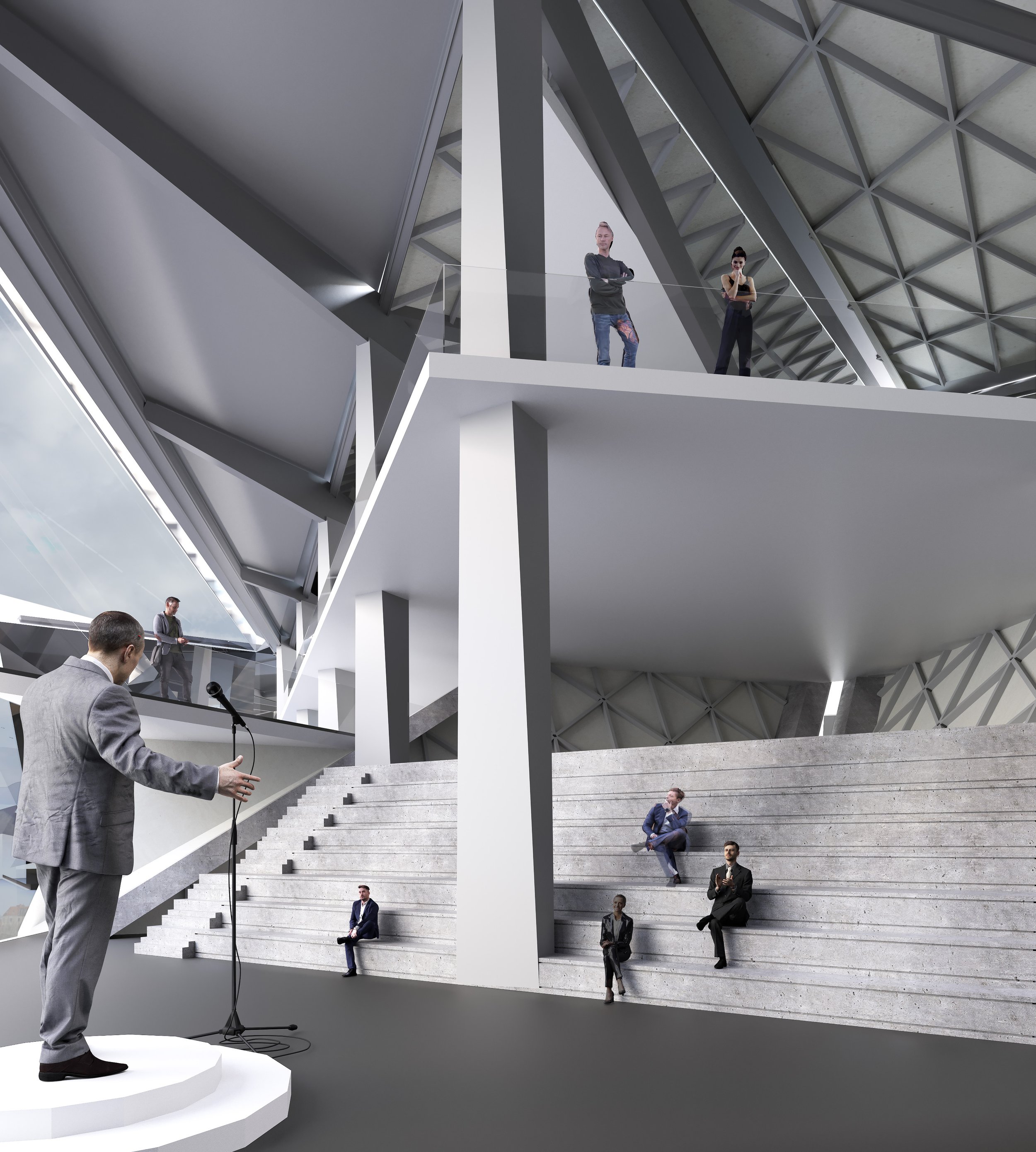
Speakers' Corner
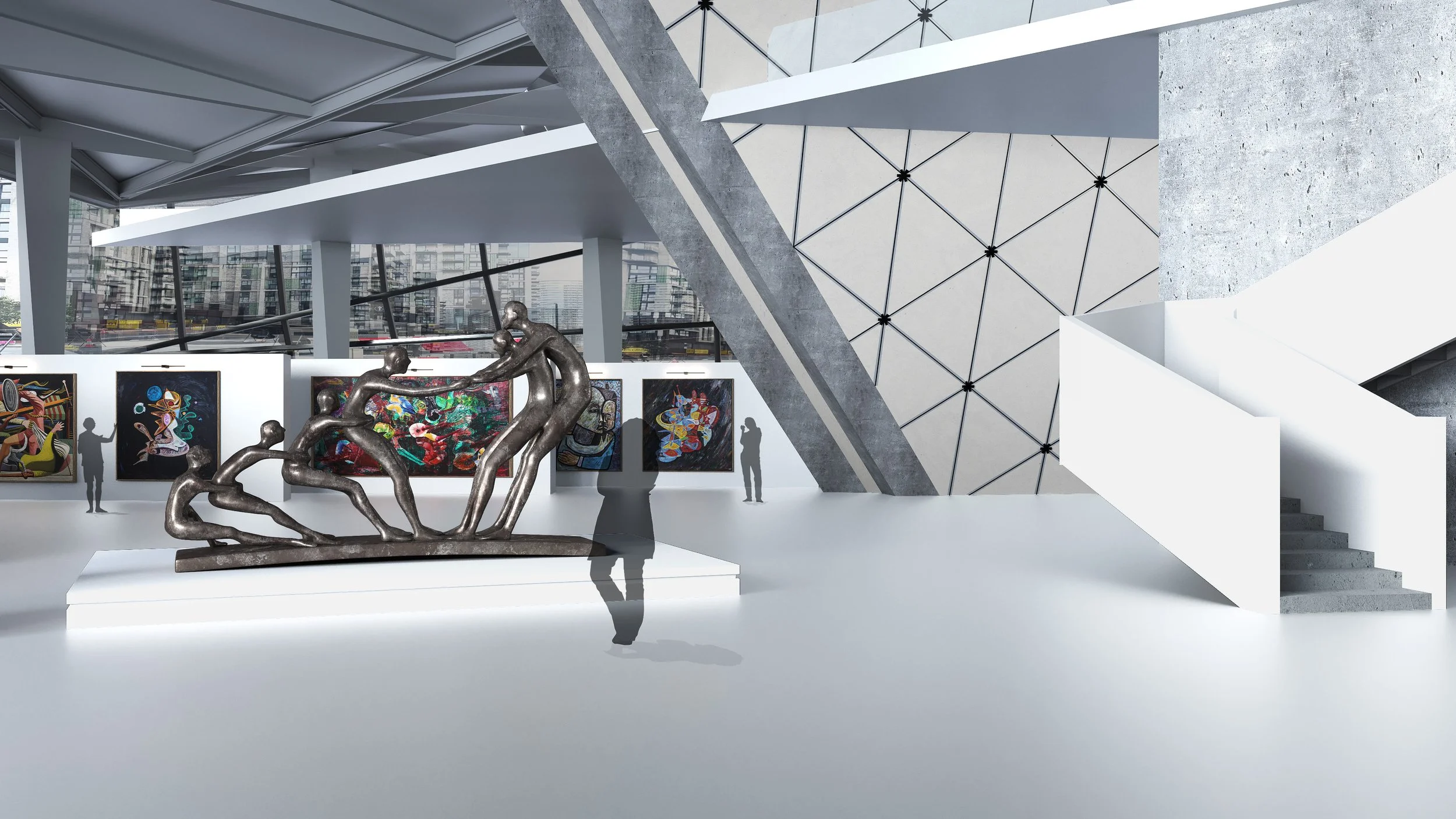
Exhibition Hall
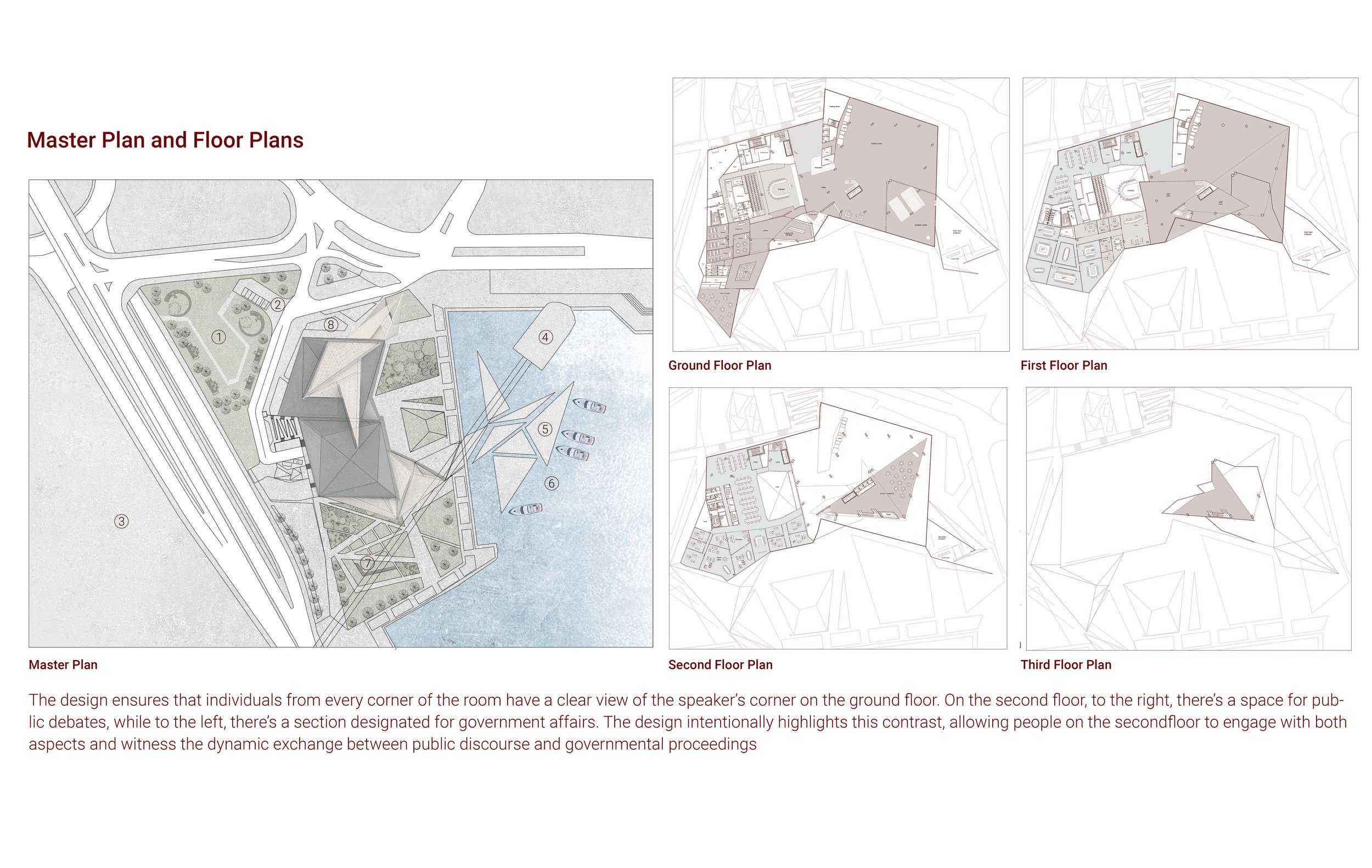
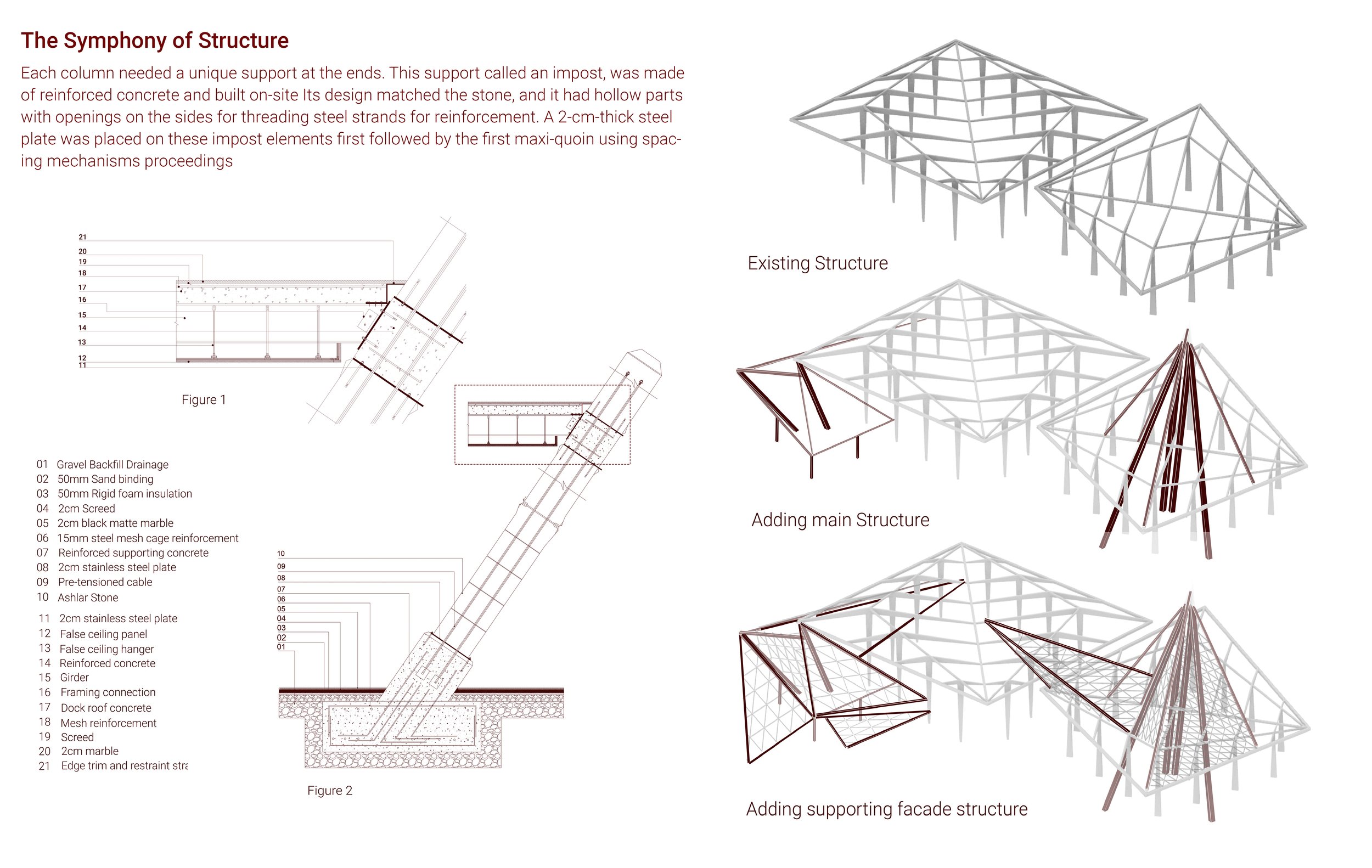
Structure

Exterior View 2
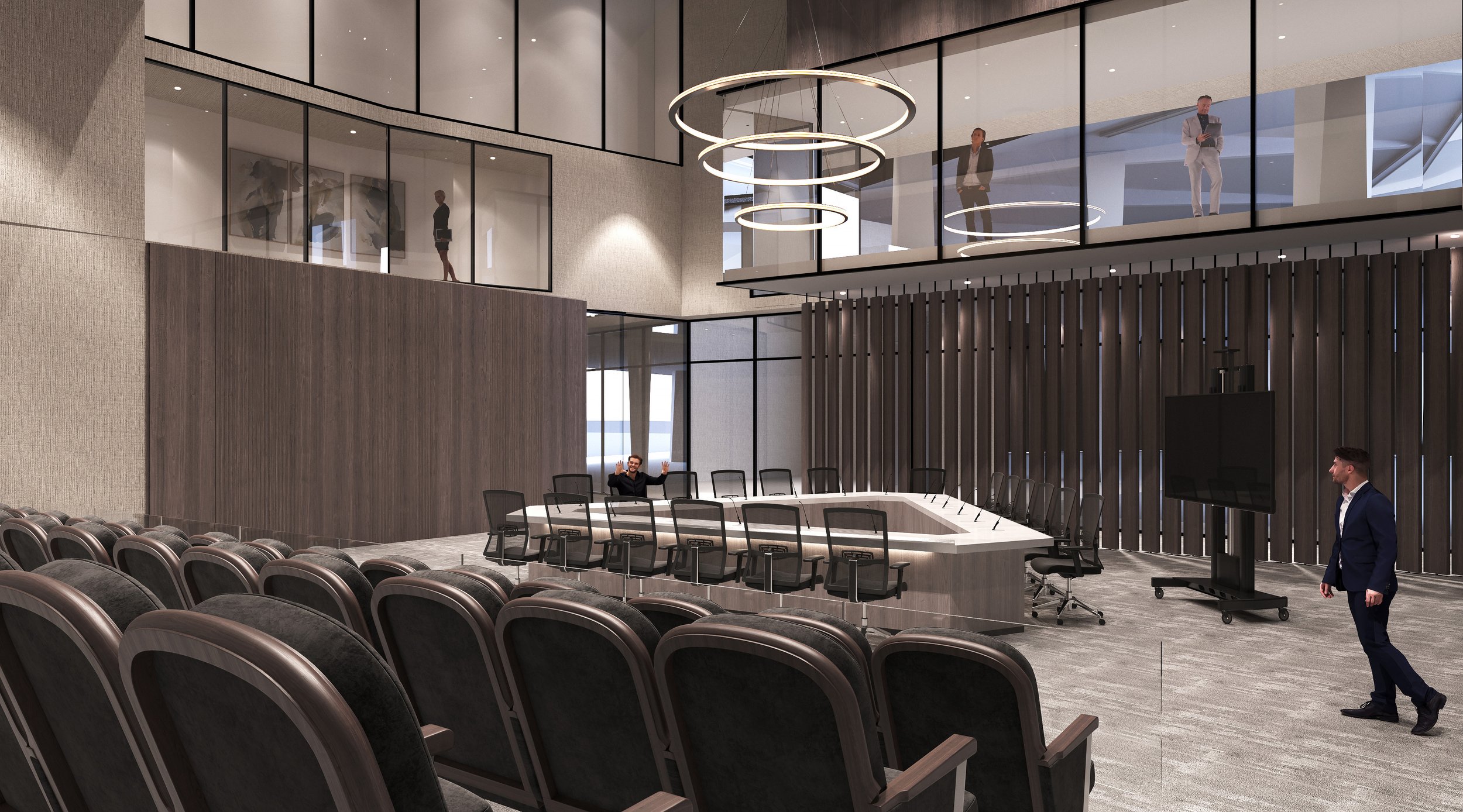
Chamber
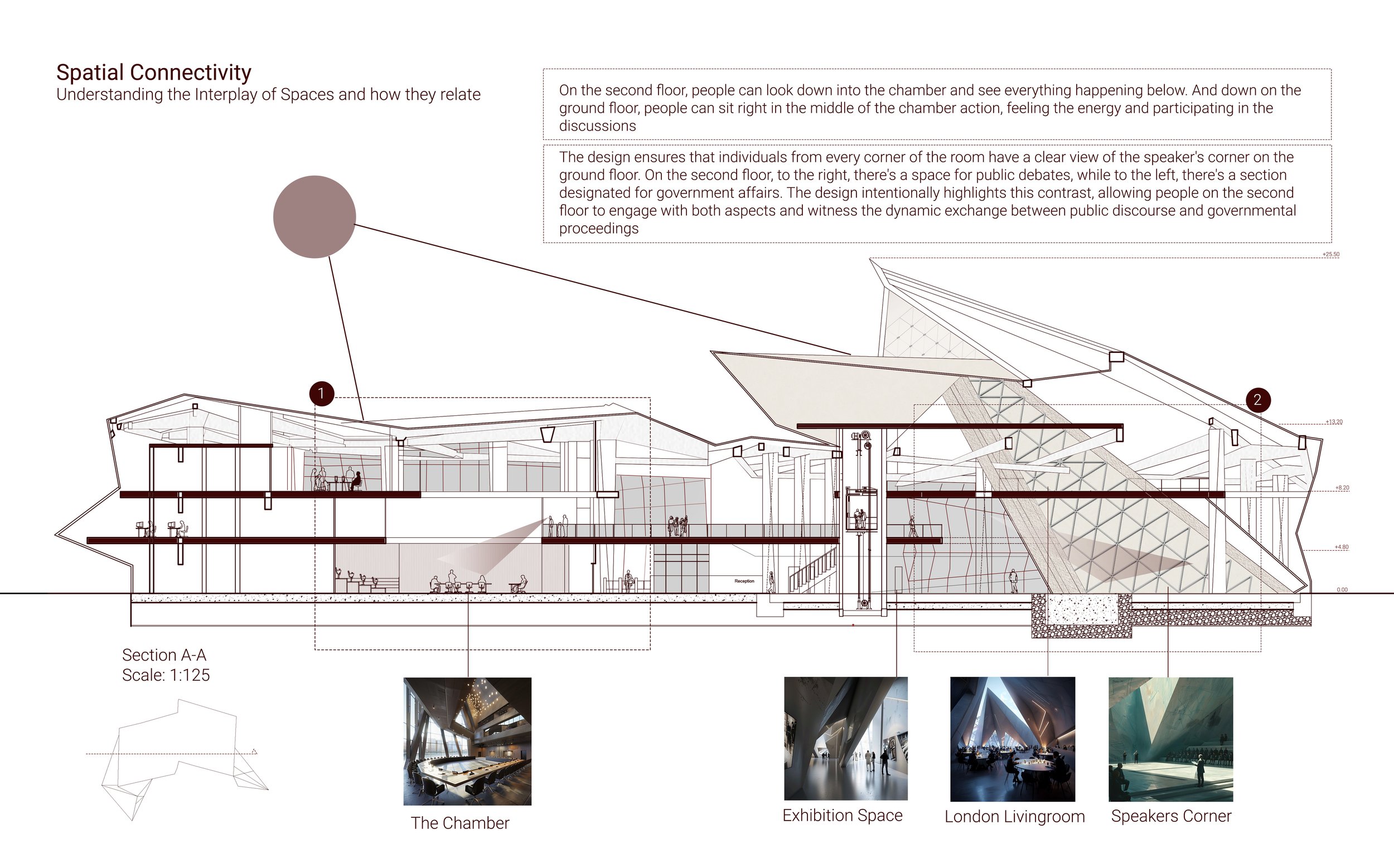
Section
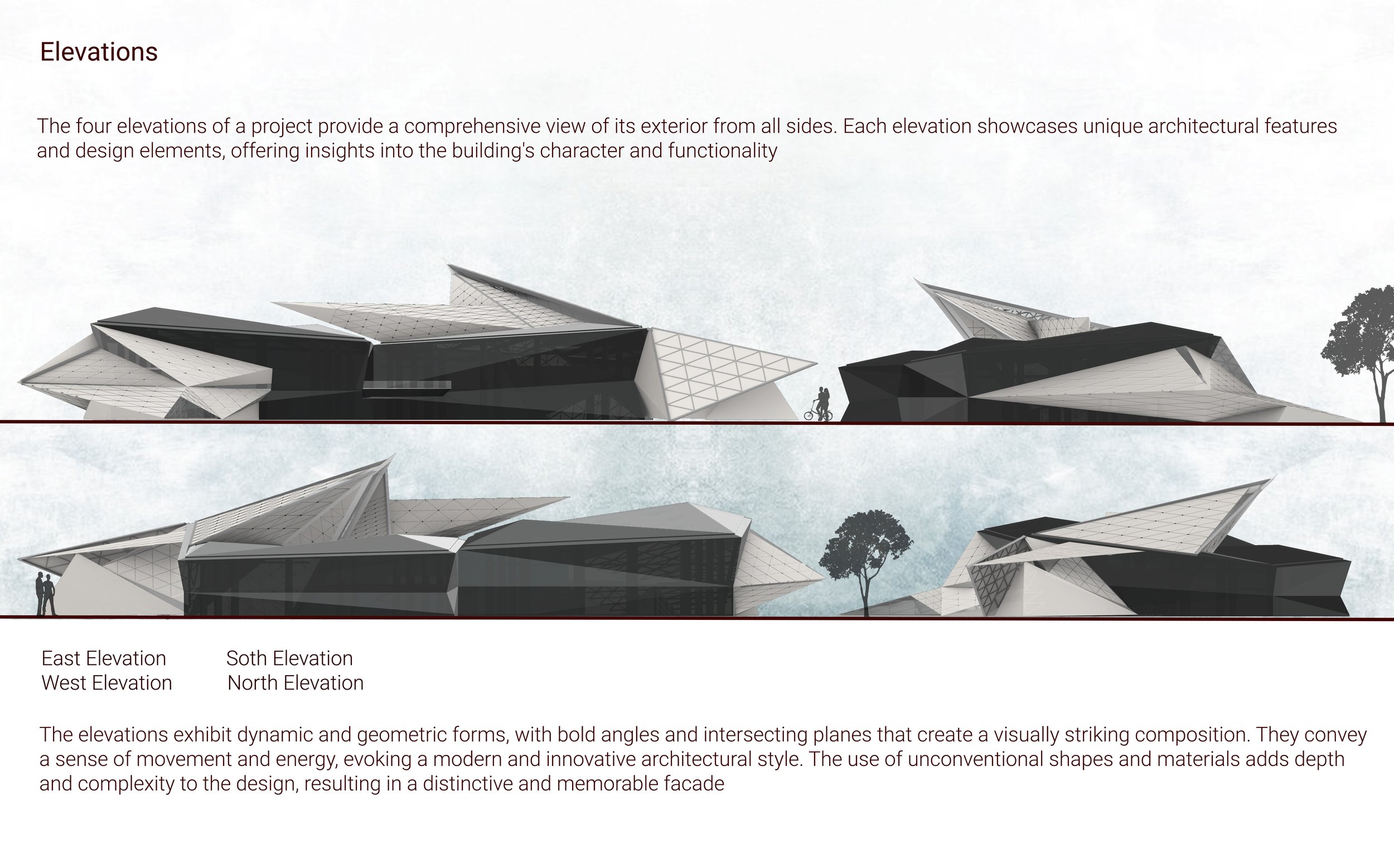
Elevation
Journey Vision Archive -Delving into the Dreamweaver
Ana Llie
The Journey Vision Archive: Delving into the Dreamweaver is a sanctuary for artists within São Miguel Island in the Azores, offering an immersive experience that explores surrealistic ornamentation and encourages visitors to delve into their dreams.
The site is designed as an “island within an island,” with abstract elements and spaces that symbolize the creative journey. Archetypes such as staircases, multiple entrances, scaffolding, tunnels, and the salt cave serve as metaphors for the creative journey, inspiring progression, diverse perspectives, support, passage, and transformation.
Through the Dreamweaver, it transcends temporal boundaries, transporting visitors to different realms of imagination and expanding their perception of space and time. It aims to provoke thought, ignite inspiration, and leave a lasting imprint on those who embark on this dream journey of inspiration.
Just like a captivating book can “prompt” your mind a carefully designed space can “prompt” your mind as well, by exploring the realms of curiosity and reaching different levels of inspiration.
Themes: Experimentation, Postgraduate
“The project emphasized inclusivity and social justice by designing spaces that are accessible to all and enjoyable. I sought to create a sanctuary where individuals could escape the pressures of everyday life and find solace and inspiration. ”
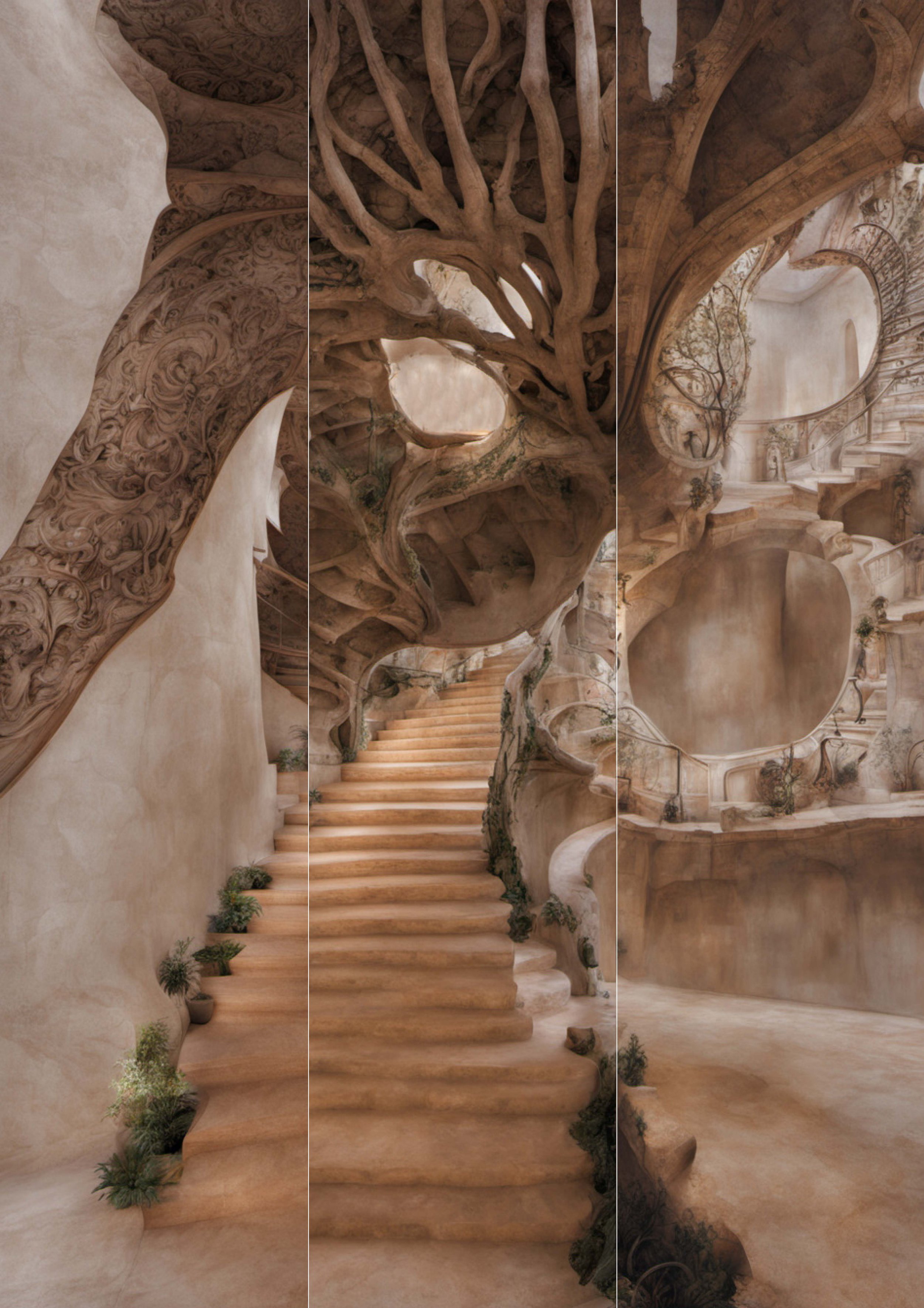
Archive Library Visions (Fabric Painter, Tree Sculptor, Time Poet)
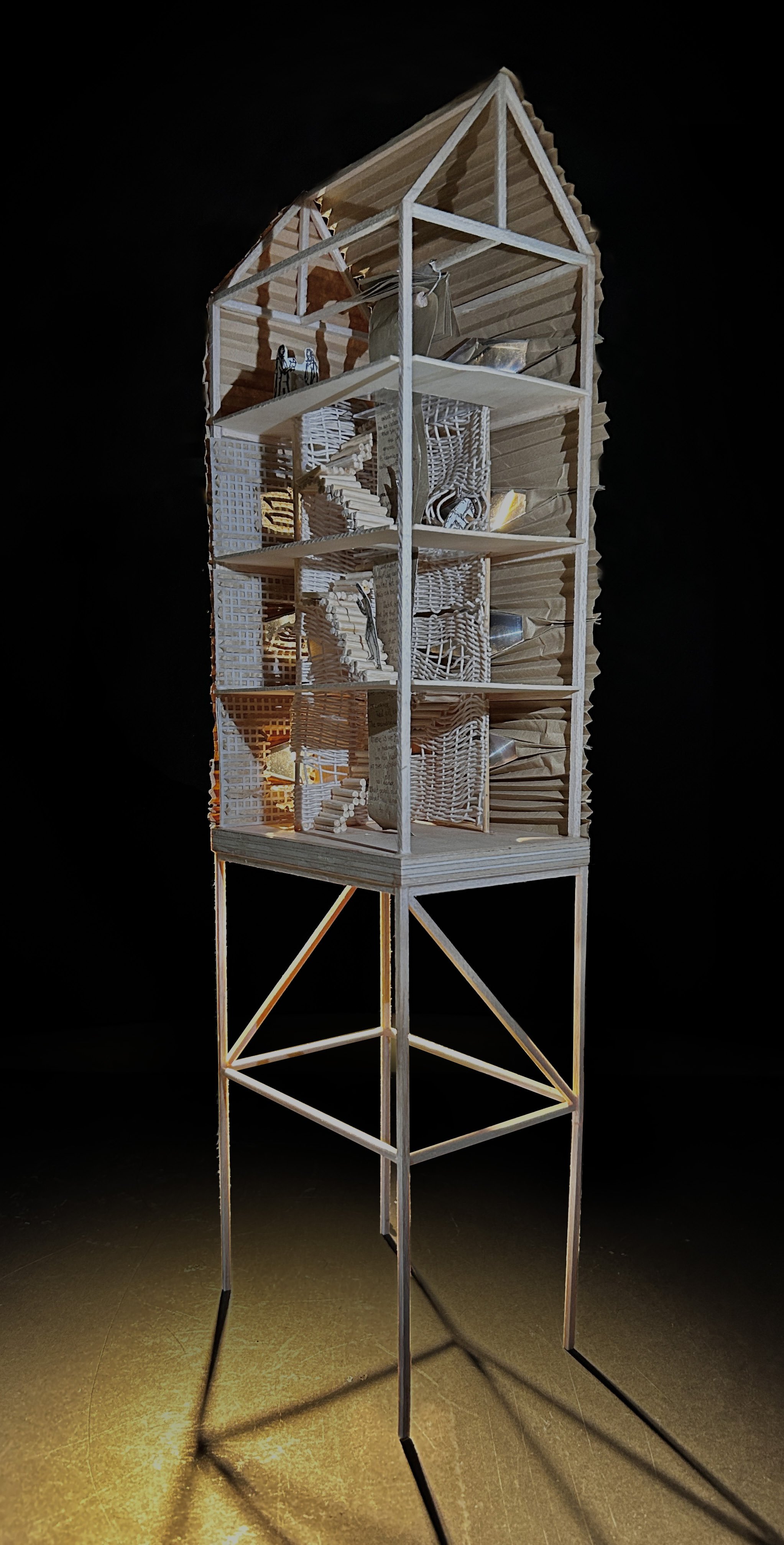
Literature Workshop Physical Model
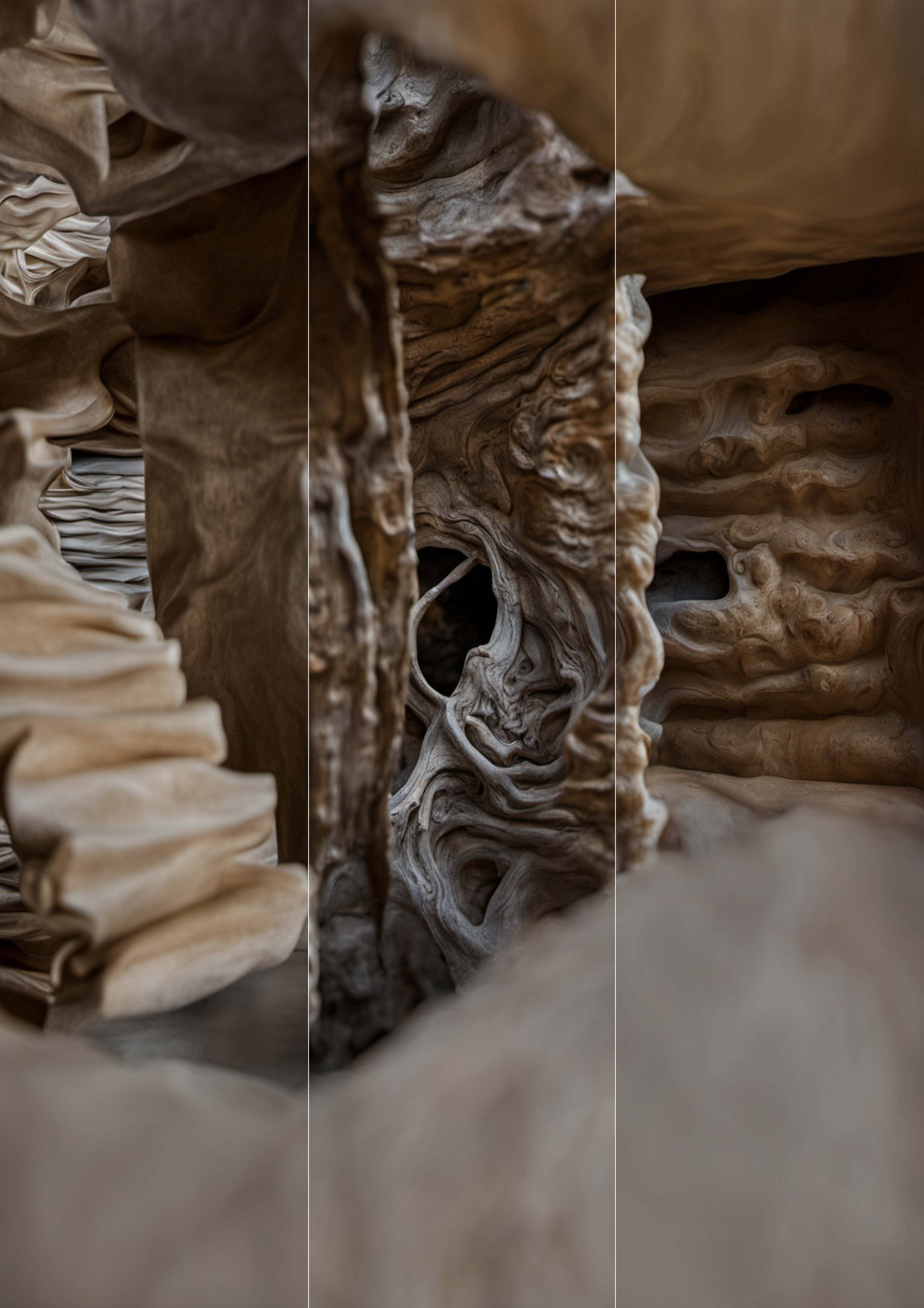
Literature Workshopl Visions (Fabric Painter, Tree Sculptor, Time Poet)
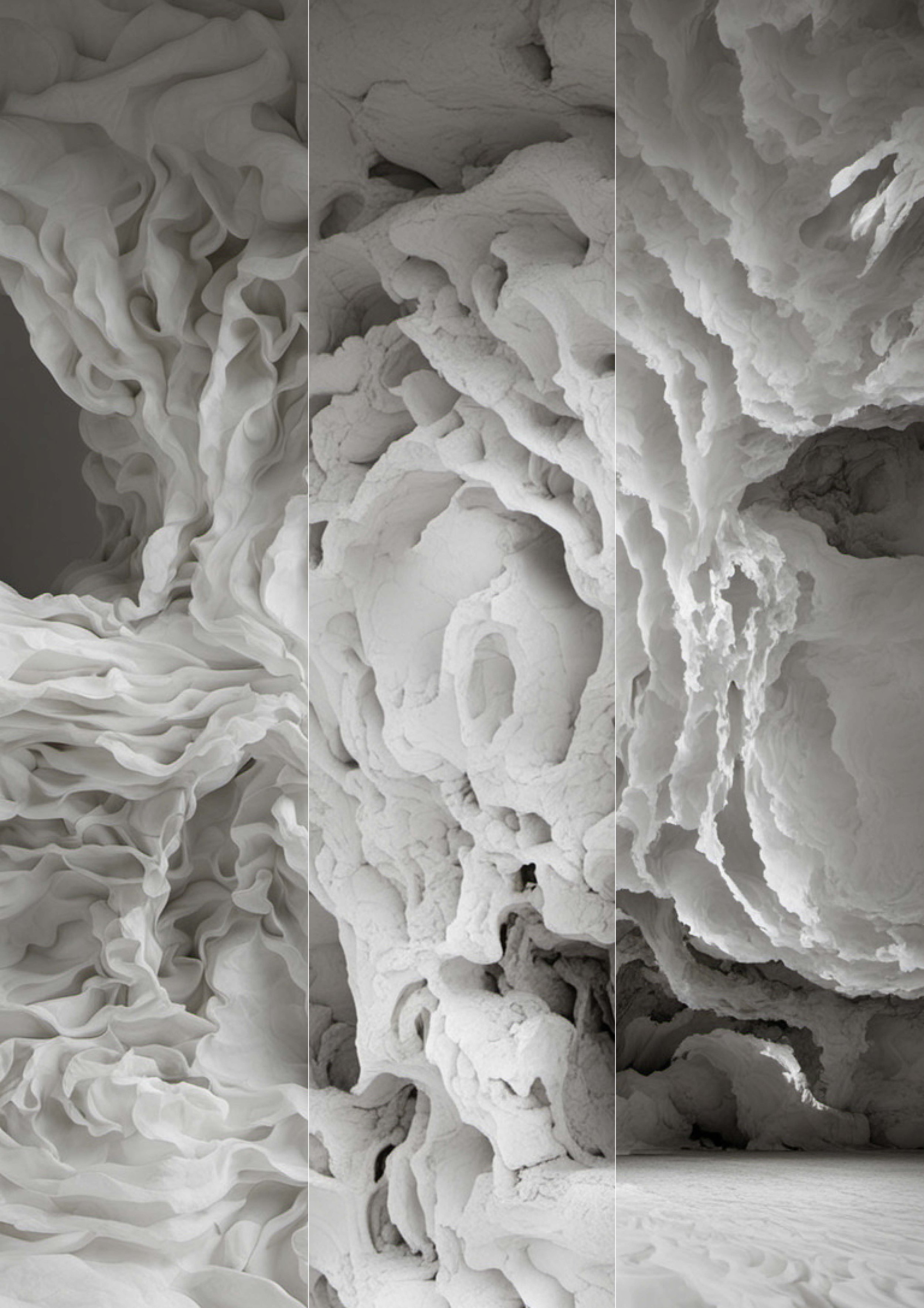
Meditation Space Visions (Fabric Painter, Tree Sculptor, Time Poet)
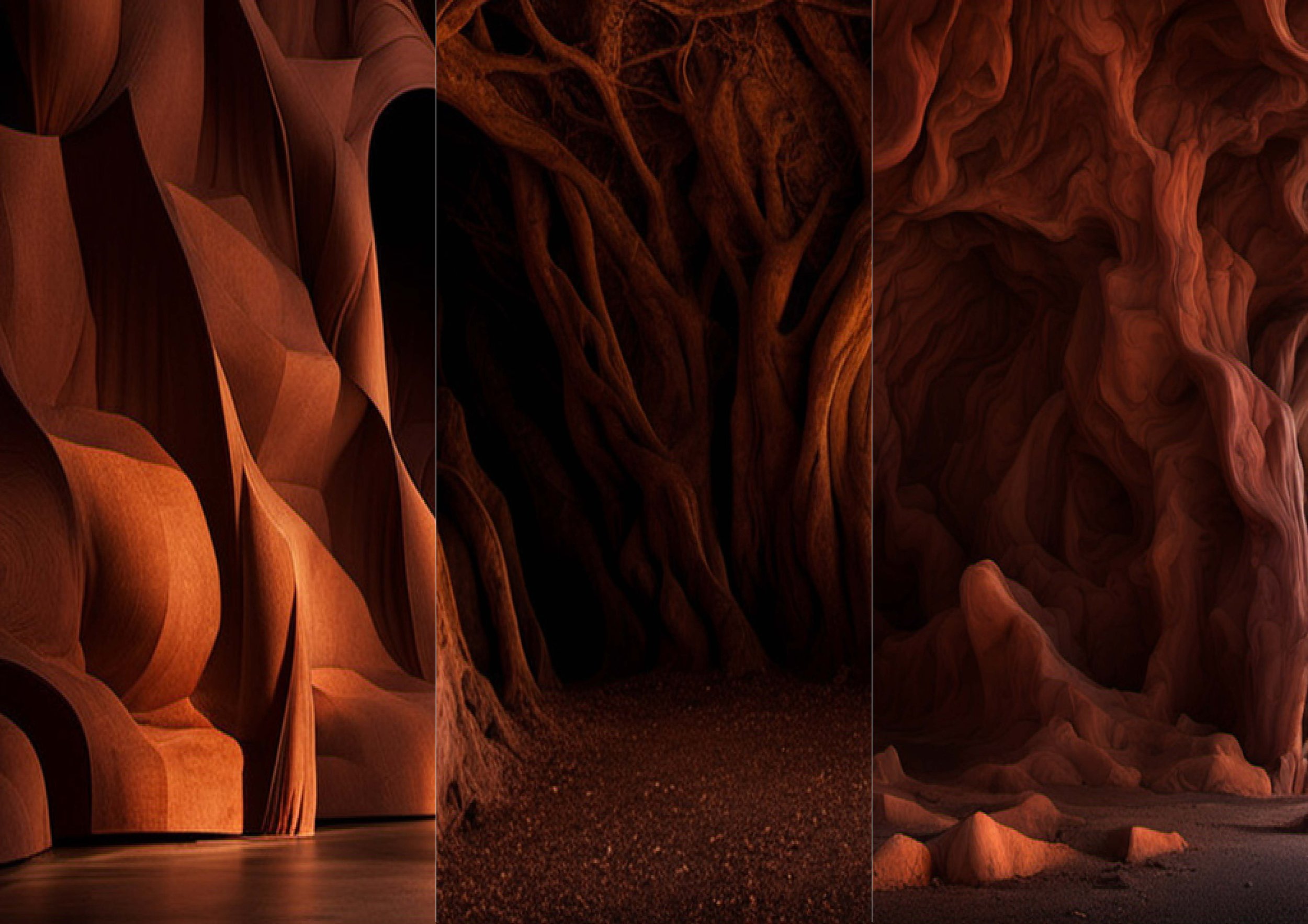
Undeground Tunnel Visions
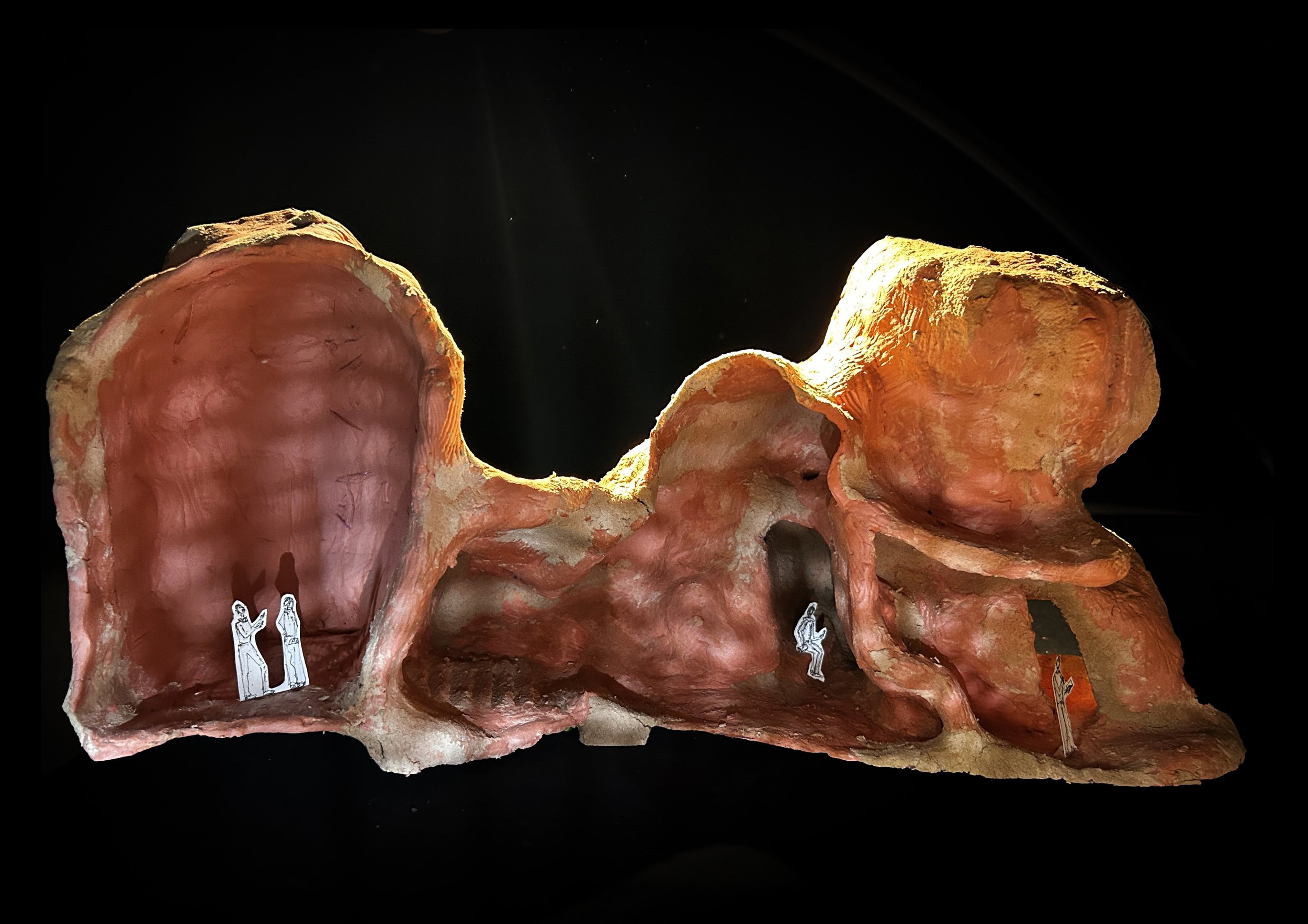
Underground Tunnel Physical Model
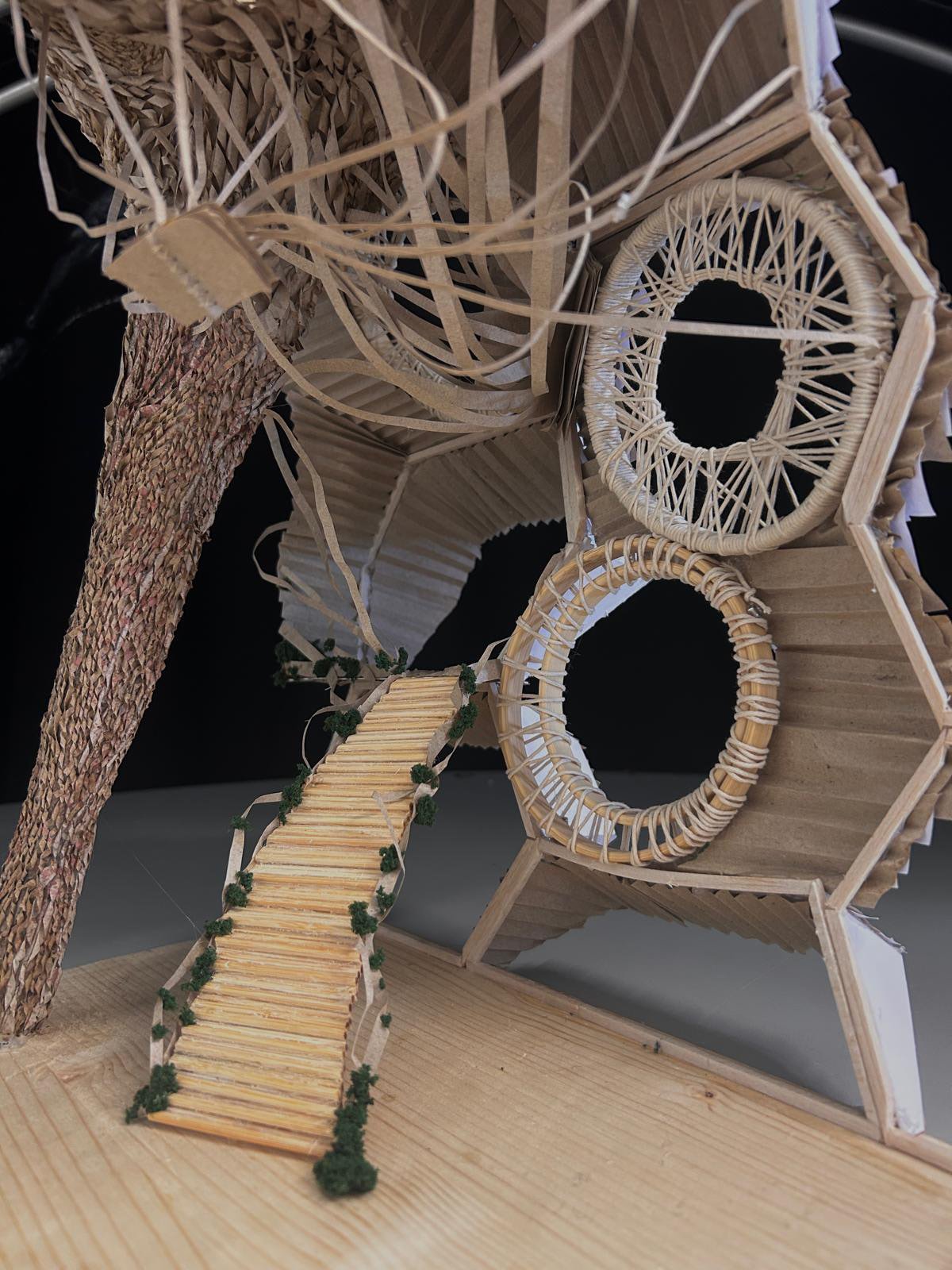
Archive Library Physical Model
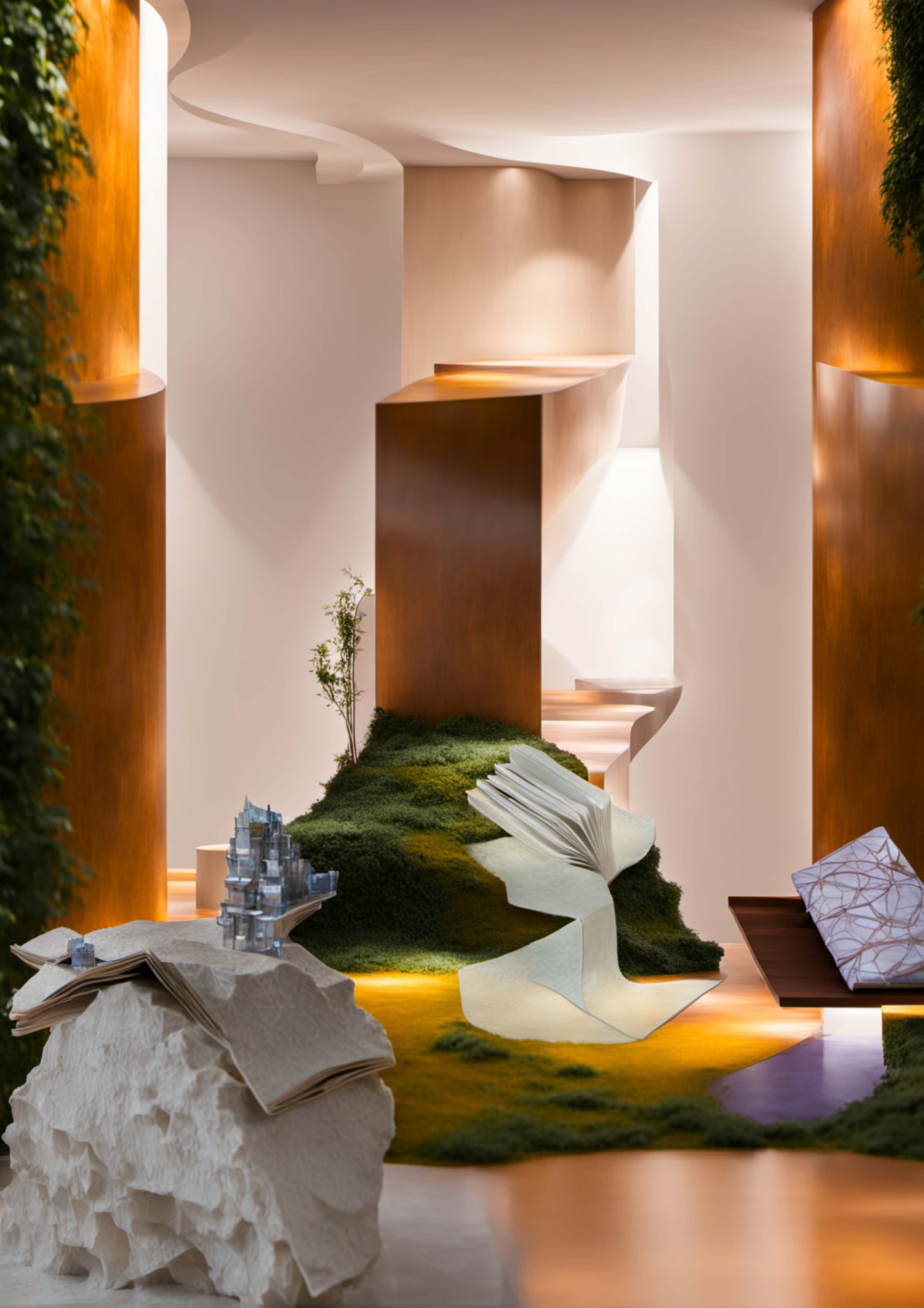
Just like a captivating book can “prompt” your mind a carefully designed space can “prompt” your mind as well